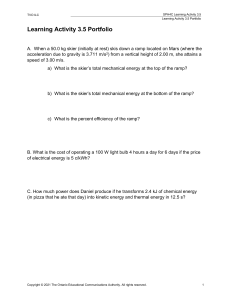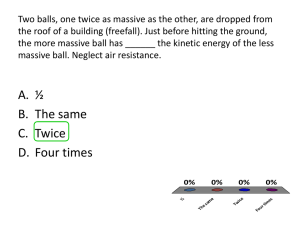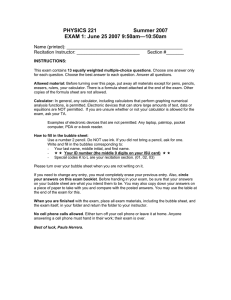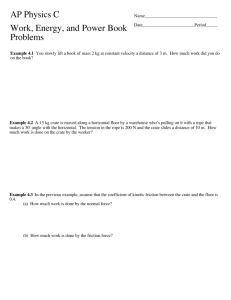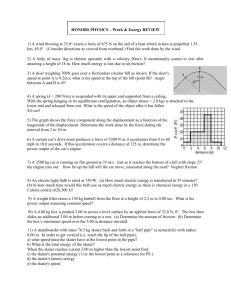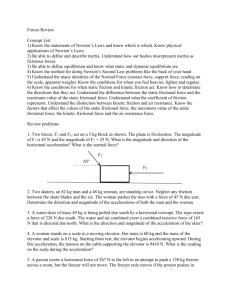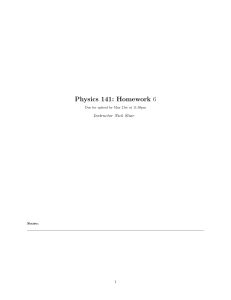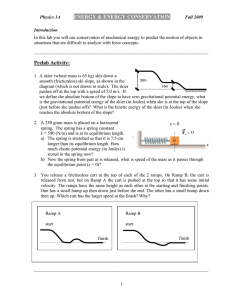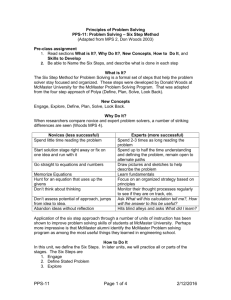Physics Class Test: Force, Energy, and Motion
advertisement
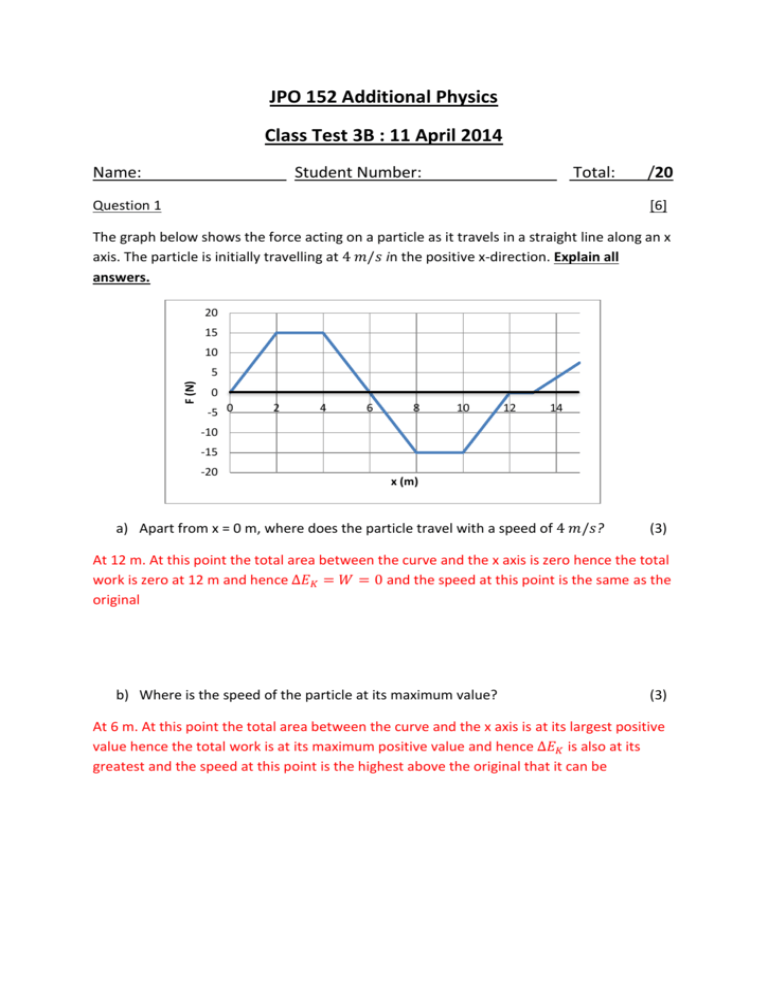
JPO 152 Additional Physics Class Test 3B : 11 April 2014 Name: Student Number: Total: Question 1 /20 [6] The graph below shows the force acting on a particle as it travels in a straight line along an x axis. The particle is initially travelling at 4 𝑚/𝑠 in the positive x-direction. Explain all answers. 20 15 10 F (N) 5 0 -5 0 2 4 6 8 10 12 14 -10 -15 -20 x (m) a) Apart from x = 0 m, where does the particle travel with a speed of 4 𝑚/𝑠? (3) At 12 m. At this point the total area between the curve and the x axis is zero hence the total work is zero at 12 m and hence ∆𝐸𝐾 = 𝑊 = 0 and the speed at this point is the same as the original b) Where is the speed of the particle at its maximum value? (3) At 6 m. At this point the total area between the curve and the x axis is at its largest positive value hence the total work is at its maximum positive value and hence ∆𝐸𝐾 is also at its greatest and the speed at this point is the highest above the original that it can be Question 2 [8] In the diagram alongside, a small block is sent through point A with a speed of 7 m/s. Is path is without friction until it reaches the section of length 𝐿 = 12 𝑚, where the coefficient of kinetic friction is 0.70. The indicated heights are ℎ1 = 6 𝑚 and ℎ2 = 2 𝑚. a) Without using the equations of motion, determine the speed of the block at point C. (3) 𝐸𝑚𝑒𝑐ℎ,𝑖 = 𝐸𝑚𝑒𝑐ℎ,𝑓 1 1 𝑚𝑔ℎ1 + 𝑚𝑣𝑖2 = 𝑚𝑔ℎ2 + 𝑚𝑣 2 2 2 1 1 𝑣 = √𝑔(ℎ1 − ℎ2 ) + 𝑣𝑖2 = √9.8(4) + 72 = 7.98 𝑚/𝑠 2 2 b) Does the block reach point D? If so what is its speed there; if not then how far along the section of friction does the block stop? (You may not use equations of motion) (5) 𝐸𝑖 = 𝐸𝑓 1 𝑚𝑔ℎ1 + 𝑚𝑣𝑖2 = 𝑚𝑔ℎ2 + 𝜇𝑘 𝑚𝑔𝑑 2 𝑑= 1 𝑔(ℎ1 − ℎ2 ) + 2 𝑣𝑖2 𝜇𝑘 𝑔 = 9.28 < 𝐿 Hence it does not reach point D and stops 9.28m along friction stretch Question 3 [6] The ski jump is one of the most contested sports in the Winter Olympics. A skier enters the ramp as shown below: a) If the height of the ramp H is increased then will the speed at which the skier leaves the ramp increase, decrease or be equal to speed prior the adjustment? Explain (3) 1 1 Increase. Since mechanical energy is conserved then 𝑚𝑔𝐻 + 2 𝑚𝑣𝑖2 = 2 𝑚𝑣 2 hence 1 𝑣 = √𝑔𝐻 + 2 𝑣𝑖2 As H is increased then so will the speed at which the skier leaves the ramp b) If the mass of the skier increases then is the speed at which the skier leaves the ramp greater than, less than or equal to the speed prior the adjustment? Explain. (3) 1 2 Equal to. As seen above 𝑣 = √𝑔𝐻 + 𝑣𝑖2 which means that final speed is independent of mass Formula Sheet 1 𝐸𝐾 = 𝑚𝑣 2 2 𝑊 = ∫ 𝐹(𝑥)𝑑𝑥 𝑊 = 𝐹⃗ ∙ 𝑑⃗ = 𝐹𝑑 cos 𝜑 𝐹⃗ = −𝑘𝑑⃗ 𝐹𝑥 = −𝑘𝑥 1 1 𝑊𝑠 = 2 𝑘𝑥𝑖2 − 2 𝑘𝑥𝑓2 𝑊𝑔 = −𝑚𝑔ℎ 𝑊𝑛𝑒𝑡 = ∆𝐸𝑘 𝐹=− 𝑑𝐸𝑝 𝑑𝑥 𝑊 = ∆𝐸𝑚𝑒𝑐ℎ + ∆𝐸𝑡ℎ + ∆𝐸𝑖𝑛𝑡
